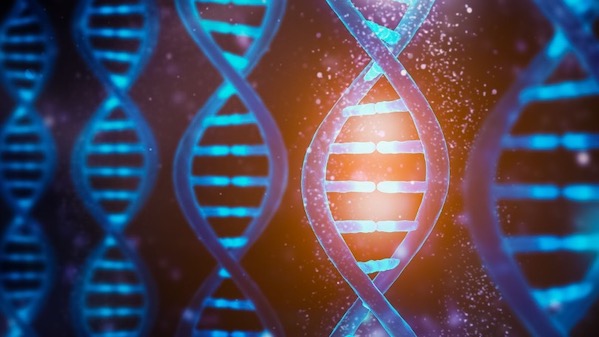The power of genetics — how research into gene sequencing could revolutionize biopharma
May 25, 2023
Source: drugdu
 625
625

Unlocking the potential of human genetics is key to many advances in the biopharma industry. From immunotherapies that treat cancer to potential cures for rare diseases to mapping the genome for incredible medical discoveries, researchers have still only scratched the surface of what is possible in gene science.
Just last week, the FDA approved the first-ever gene therapy that can be applied directly to the skin to treat patients known as “butterfly children” because of how fragile their skin can be. These kinds of forward-thinking medicines have come about due to the ever more advanced understanding of how genetics cause certain conditions. And early research in the genetic space — even that which might not appear directly related to medicine — has given scientists the tools to make better treatments down the road.
Some of those treatments are on their way to helping patients soon. One cell therapy in late-stage trials could change the landscape of Duchenne muscular dystrophy. An understanding of how certain genes affect cardiovascular disease could lead to better breakthroughs. The promise of mRNA beyond COVID-19 vaccines is vast.
Here, we’re looking at some recent discoveries in genetics that could bring major shifts in the future — medical and otherwise.
Ancient DNA provides a clue to human evolution
What we know about human genetics comes from studying the genome and the many complex interactions therein — and that is only at the current state of human evolution. Imagine being able to look back thousands of years to prehistoric humans and understanding how their genes differ from our own, perhaps granting clues to the connections between the genetic code and disease.
Researchers at Germany’s Max Planck Institute for Evolutionary Anthropology have developed a way to isolate DNA from a deer tooth worn by a woman who lived as far back as 25,000 years ago — her DNA is a time capsule that helped researchers learn more about where the ancient woman came from and potentially how she lived.
“It is amazing that this is still possible after 20,000 years,” said geneticist Matthias Meyer in a release from the institute.
This isn’t the first time anthropological research has made use of DNA to understand our biological history. A study from 2019 found that ancient pathogens could provide clues to infectious diseases, potentially helping researchers overcome emerging threats to public health.
Making the genetic connection
In many cases, we know how to diagnose an illness and we know how to read the human genome — but making a connection between the two is the most important part of using genetics to treat those diseases.
Researchers at New York University and the New York Genome Center have discovered a new way to find causal links between genes and physical conditions. This new method uses large-scale genome studies along with the gene-editing tool CRISPR to target specific regions of the genetic code, helping to understand which locations play a part in causing diseases, according to a release from NYU.
The scientists used the method, called STING-seq, to identify particular genes that contribute to sickle cell disease. But the future could be limitless in scope and there is still much to learn, the researchers said.
“The huge success in (genome-wide association studies) has highlighted the challenge of extracting insights into disease biology from these massive data sets,” said NYGC senior associate faculty member and the study’s co-author, Tuuli Laapalainen. “Despite all of our efforts during the past 10 years, the glass was still just half full — at best. We needed a new approach.”
Using DNA as data storage
DNA contains the genetic information that make living organisms what they are, and as we understand more about how that code works, those building blocks can be used to store information like a biological supercomputer, researchers at the Eindhoven University of Technology in the Netherlands have found.
Professor Tom de Greef worked with Microsoft to develop synthetic DNA that could someday be scalable to solve a big problem: too much data in the world. De Greef said in a university release that in only three years, there will be so much information that current data centers wouldn’t be able to store half of it.
The idea for using DNA to store data began in the 1980s, according to the release, but the technology had not reached a point where it was feasible. Fast forward to 2023, when genetic research has advanced to allow tiny microcapsules to contain bits of information that can be searchable on a large scale.
And with the technology catching up to the original concept, the only piece of the puzzle left to fall into place is the cost.
“Now it’s just a matter of waiting until the costs of DNA synthesis fall further,” de Greef said. “The technique will then be ready for application.”
Reference:
https://www.pharmavoice.com/news/genetics-research-therapy-treatment/650925/
Read more on
- 20-Valent Pneumococcal Vaccine Approved for Clinical Trials January 20, 2026
- ADC205 Tablets Received Approval for Drug Clinical Trial January 20, 2026
- Sifang Optoelectronics makes strategic investment in Changhe Biotechnology January 20, 2026
- Mingde Bio plans to acquire a 51% stake in Hunan Lanyi through capital increase and acquisition January 20, 2026
- accelerating the transition of CLL treatment into a “chemotherapy-free era”. January 20, 2026
your submission has already been received.
OK
Subscribe
Please enter a valid Email address!
Submit
The most relevant industry news & insight will be sent to you every two weeks.



